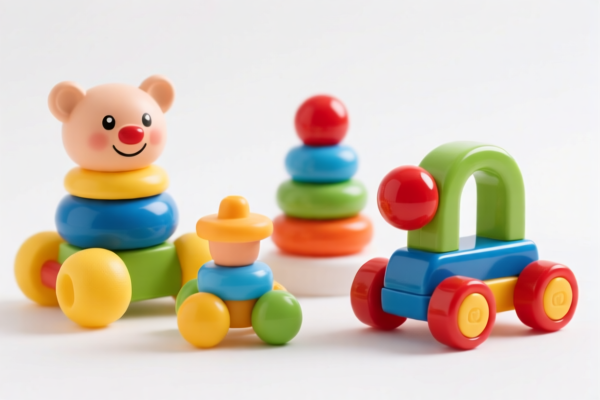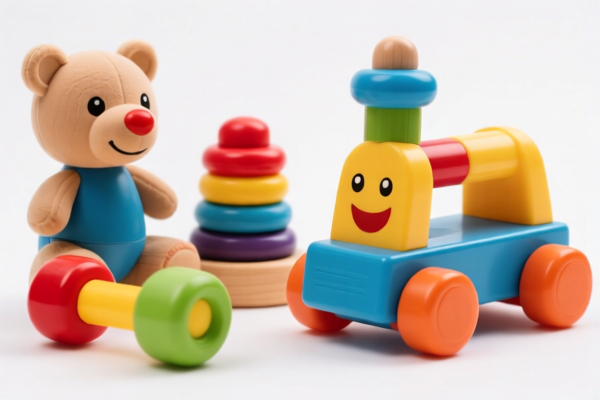| HS Code | Official Doc | Tariff Rate | Origin | Destination | Effective Date |
|---|---|---|---|---|---|
| 9503000090 | Doc | 30.0% | CN | US | 2025-05-12 |
| 3926909989 | Doc | 42.8% | CN | US | 2025-05-12 |
| 7326908688 | Doc | 82.9% | CN | US | 2025-05-12 |
| 4016990500 | Doc | 40.9% | CN | US | 2025-05-12 |




Okay, let's break down the HS codes and tax implications for your "FIDGET TOYS" declaration. Here's a structured analysis to help you understand the classification and potential costs.
Understanding HS Codes: A Quick Primer
HS codes (Harmonized System codes) are internationally standardized codes used to classify traded products. The first 6 digits are generally consistent worldwide, while additional digits can vary by country. Here's what the digits typically represent:
- Chapter (First 2 digits): Broad category of the product.
- Heading (Next 2 digits): More specific grouping within the chapter.
- Subheading (Next 2 digits): Further refinement of the product.
- Additional Digits: Country-specific details for tariff and statistical purposes.
Analysis of Your HS Codes
Let's examine each code provided:
1. 9503.00.00.90 – Tricycles, scooters, pedal cars and similar wheeled toys; dolls’ carriages; dolls, other toys; reduced-scale (“scaleˮ) models and similar recreational models, working or not; puzzles of all kinds; parts and accessories thereof - Other
- Chapter 95: Toys, games and sports equipment.
- Heading 9503: Tricycles, scooters, pedal cars and similar wheeled toys; dolls’ carriages; dolls, other toys; reduced-scale (“scaleˮ) models and similar recreational models, working or not; puzzles of all kinds.
- Subheading 9503.00.00: Other. This is a broad "catch-all" for toys not specifically listed elsewhere in this heading.
-
Tax:
- Base Tariff: 0.0%
- Additional Tariff: 0.0%
- Tariff after April 2, 2025: 30.0%
- Total Tax: 30.0%
Note: This code seems suitable for larger, more traditional toys like ride-on toys, dolls, or complex puzzle sets.
2. 3926.90.99.89 – Other articles of plastics and articles of other materials of headings 3901 to 3914: --> Other: --> Other --> Other
- Chapter 39: Plastics and articles thereof.
- Heading 3926: Other articles of plastics and articles of other materials.
- Subheading 3926.90.99: Other. This is a very general category for plastic articles not specifically classified elsewhere.
-
Tax:
- Base Tariff: 5.3%
- Additional Tariff: 7.5%
- Tariff after April 2, 2025: 30.0%
- Total Tax: 42.8%
Note: This code is likely for fidget toys made primarily of plastic, like plastic spinners, cubes, or other molded plastic items.
3. 7326.90.86.88 – Other articles of iron or steel: --> Other: --> Other: --> Other: --> Other --> Other
- Chapter 73: Articles of iron or steel.
- Heading 7326: Other articles of iron or steel.
- Subheading 7326.90.86: Other. This is a broad category for iron or steel articles not specifically classified elsewhere.
-
Tax:
- Base Tariff: 2.9%
- Additional Tariff: 25.0%
- Tariff after April 2, 2025: 30.0% (Steel/Aluminum products)
- Total Tax: 82.9%
Note: This code is for fidget toys made primarily of iron or steel, like metal spinners or other metal-based items. The high tariff rate is due to the additional tariffs on steel products.
4. 4016.99.05.00 – Other articles of vulcanized rubber other than hard rubber: --> Other: --> Household articles not elsewhere specified or included
- Chapter 40: Rubber and articles thereof.
- Heading 4016: Other articles of vulcanized rubber other than hard rubber.
- Subheading 4016.99.05: Household articles not elsewhere specified or included.
-
Tax:
- Base Tariff: 3.4%
- Additional Tariff: 7.5%
- Tariff after April 2, 2025: 30.0%
- Total Tax: 40.9%
Note: This code is for fidget toys made primarily of rubber, like rubber stress balls or other rubber-based items.
Important Considerations & Recommendations:
- Material Composition: The most crucial factor in determining the correct HS code is the primary material of the fidget toy. If a toy is made of multiple materials, the material that gives it its essential character determines the code.
- Single vs. Mixed Materials: If a toy is a combination of materials (e.g., plastic with metal parts), you may need to consider if it qualifies as a single article or multiple articles.
- April 2, 2025 Tariff Changes: Be aware of the significant tariff increases scheduled for April 2, 2025. Plan your imports accordingly.
- Certification: Depending on the materials used (especially plastics and rubber), you may need to provide certifications to demonstrate compliance with safety standards (e.g., RoHS, REACH).
- Accurate Valuation: Ensure your declared value is accurate, as tariffs are calculated based on this value.
- Consult a Customs Broker: For complex cases or if you are unsure about the correct classification, it is highly recommended to consult with a licensed customs broker in your destination country. They can provide expert guidance and help you avoid potential delays or penalties.
To help me refine the classification further, could you provide more details about the specific types of fidget toys you are importing? For example:
- What are the primary materials used in each type of toy?
- Are there any metal components?
- What is the approximate value of each toy?
Disclaimer: I am an AI assistant and cannot provide definitive customs classification advice. This information is for general guidance only. Always consult with a qualified customs professional for accurate and up-to-date information.
Customer Reviews
Fantastic resource for anyone dealing with plastic door exports. The HS code and tariff info are spot-on.
The site is helpful, but I wish there were more examples of how the tariff rates apply in real scenarios.
I was impressed with how clearly the HS code information was presented. Saved me a lot of time.
The trade details section helped me understand the logistics of shipping to the US. Good resource.
Great info on plastic builder’s doors and their classification. Made my exporting process much smoother.